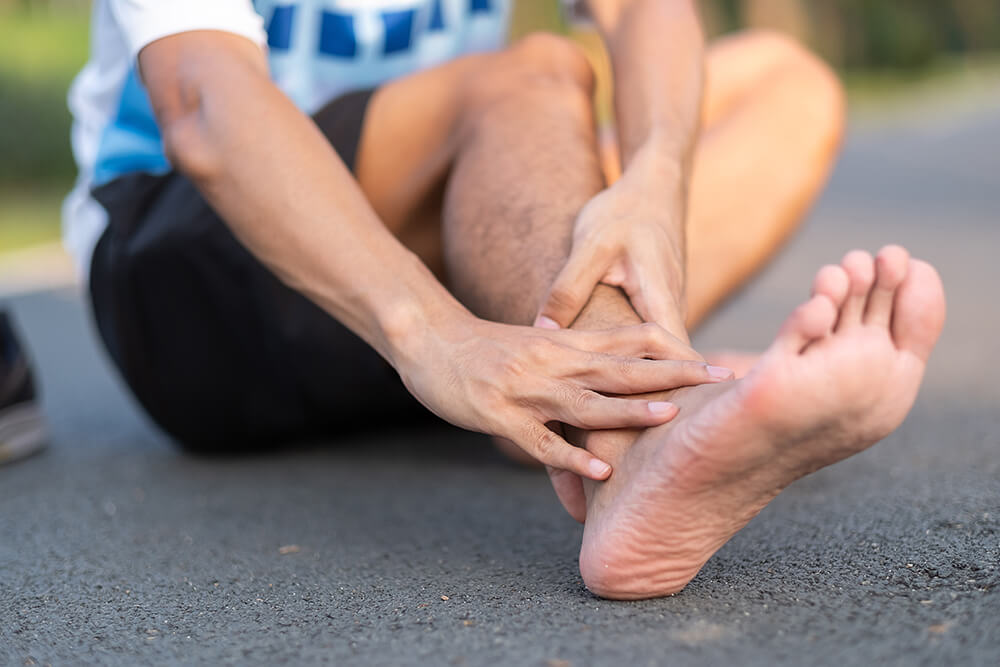It’s easy to forget how interconnected every part of your body is until something goes wrong. If you start to experience hip, knee or ankle pain, it’s not uncommon to develop the other two shortly after. When your body is in pain, it tries to compensate by relying on other joints and muscles instead of the injured area. However, this puts more strain on healthy parts of your body, making it more likely that you’ll develop further injuries
Hip, knee and ankle pain can come from many sources, including joint damage, pinched nerves, arthritis, and muscle imbalance or weakness. But you don’t have to let hip, knee and ankle pain control your life.
How physical therapy can help your pain
Depending on the source of your hip, knee and ankle pain, there are a variety of physical therapy treatments that your physical therapist may use in your treatment plan. Here are a few of the top manual therapy techniques that our licensed physical therapists use to treat hip, knee and ankle pain:
- Joint mobilization — Joint mobilization uses repeated movements to relax and loosen restricted joints. Your physical therapist will engage in this manual therapy technique with rhythmic, repetitive motions to try to steadily improve mobility. The joint is moved in a way that you would not be able to do on your own, offering a wider range of movement that can help stretch the muscle more effectively.
- Soft tissue mobilization — This manual therapy technique is centered around soft tissue such as muscles, tendons and ligaments. Your physical therapist may apply friction and pressure with their hands to the soft tissue surrounding your injury. Steady kneading motions can alleviate tension, improve flexibility and provide pain relief to the affected area.
- High velocity, low amplitude thrusting — The goal of this manual therapy technique is to help the joints open and close more effectively to restore motion. It employs a rapid use of force over a short period of time to increase your range of motion. However, the joint is not moved past its anatomical limit.
- Muscle energy techniques — Your physical therapist may use muscle energy techniques to lengthen shortened muscles and mobilize restricted joints. You may be asked to contract the affected joint or muscle, and your physical therapist will apply gentle force in the opposite direction.
Some or all of these techniques may be part of your treatment plan. Your physical therapist will evaluate your condition and decide what manual therapy techniques may help you the most.
Treatments you can do at home for hip, knee and ankle pain
Aside from physical therapy techniques that you can do at your PT’s clinic, there are also things you can do at home that may help ease your discomfort. Here are a few ways you can treat your pain from the comfort of your own home:
- Rest — When treating an injury, it’s important not to continue to strain the weakened muscles and joints. Make sure you’re resting adequately and not overexerting yourself to the point of another injury.
- Stretching — While rest is important, you still need to use the injured area somewhat. If you don’t stretch your muscles, it can be more difficult to improve strength and flexibility. Your physical therapist may be able to show you some at-home exercises to do and tell you how often to do them.
- Ice — To reduce pain and swelling, ice your hip, knee or ankle for 15 to 20 minutes. You can do this several times a day unless your physical therapist says otherwise.
- Heat — For pain and stiffness, heat may be better than ice. A hot bath or a heating pad on the affected area may reduce soreness and stiffness in your muscles and joints. Talk to your physical therapist about how often you should use this method.
- Medication — Over-the-counter anti-inflammatory pain relievers such as ibuprofen and naproxen may be effective in temporarily reducing pain. Be sure to follow the dosage instructions on the bottle and speak with your physical therapist about your pain levels.
While these at-home treatments may not provide lasting relief, they can help reduce day-to-day symptoms between your physical therapy appointments.
How to treat hip, knee and ankle pain
Hip, knee and ankle pain can be debilitating. But you don’t have to suffer through it alone. Our licensed physical therapists at Border Therapy Services are here to help.
With the right treatment plan, you can reduce your pain and live an active life. Call us or request an appointment today to discuss how physical therapy can help you increase your quality of life.

